Note: Because of short time for making this page, it will be only temporary page
without thumbnails and all pictures are with dimensions of 800 x 600 pix...
This is only temporary page, because I need make more tests and experiments and put there
some results and conclusions. For now, I will just put few pictures of today's experiments.
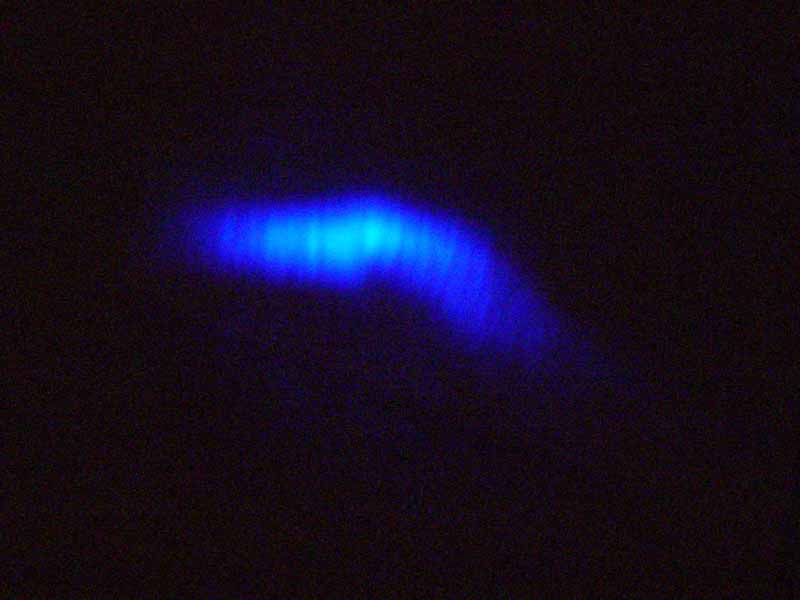
Old laser spot of just one shot on the wall at distance of about 3 meters (before improvements)
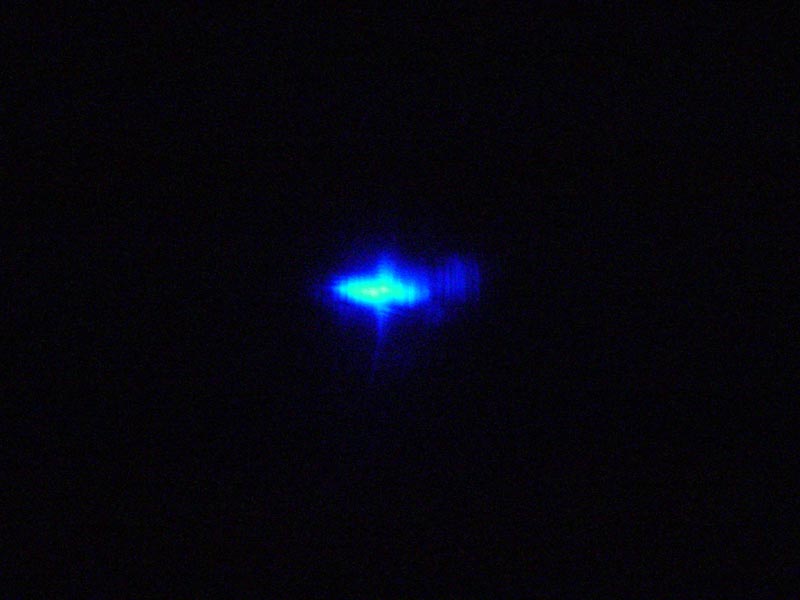
New laser spot of just one shot on the wall at distance of about 3 meters. Because of added
rear mirror, spot have less divergence and looks smaller. Also, at Marx generator are added
more capacitance (before 2 x 1 nF, now 2 x 2.7 nF), so spot is much more brighter. Both
picture was taken with same camera setting

Old laser spot of about ten pulses at distance of about 3 meters. (Paper is 21 cm wide horizontally)
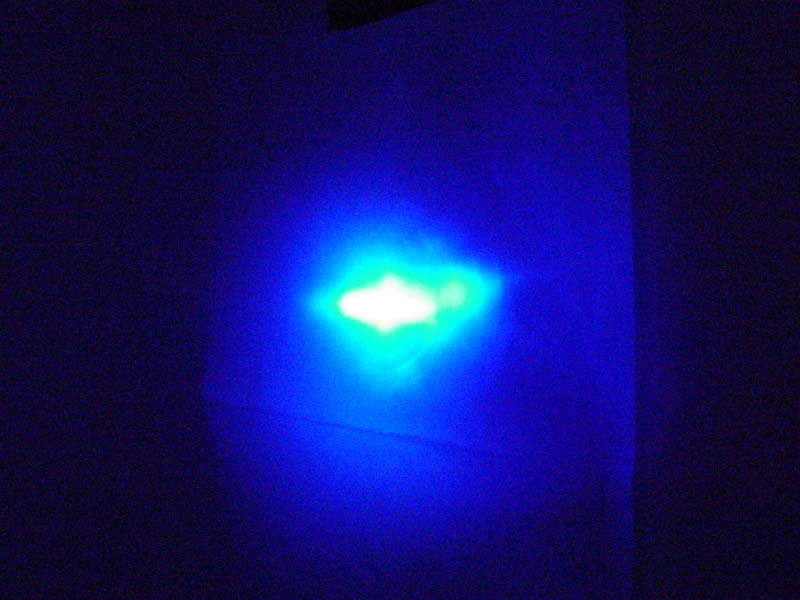
New laser spot of about ten pulses after improvement. I was not match distance between camera
and paper, but obviously spot is smaller and brighter. Both picture was taken with same camera setting.
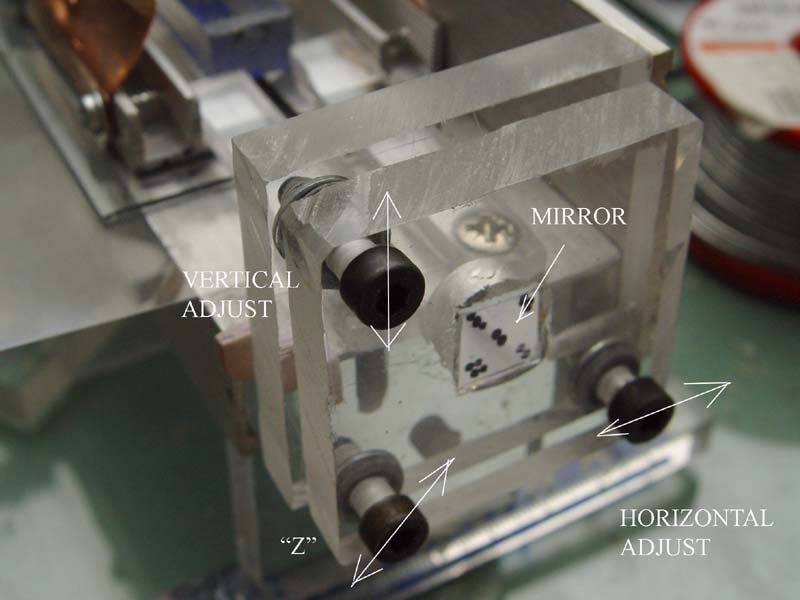
First improvement is added rear mirror with "XYZ" alignment. This is one small piece of first
surface aluminum mirror, which have bad reflectance at 337.1 nm, but enough to make more
than double power at output. It was very hard to align mirror, because laser channel is too
small with distance between electrodes 2 - 3 mm. Next time I will build laser channel with
more space for easier mirror alignment.

With added six capacitors of 570 pF each, I got more power. Before each of two stage Marx generator
has 1 nF each, now have 2.7 nF. This is not "big" improvement, but laser operate much easier and put
more power at output. Though wires between capacitors are thin and long, this was not make trouble
in laser operation.
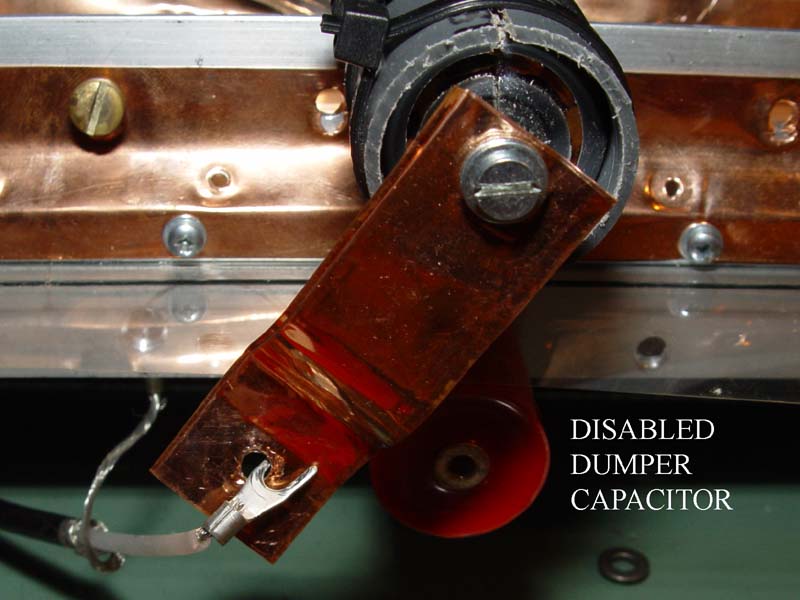
One "big" discovery is removed dumper capacitor. Now laser work with much more power. Now, pulse
travel from Marx generator through coaxial cable directly to spark gap and then to laser electrodes and
peaking capacitors. Before this, I was thinking that pulse need first charge dumper capacitor, and when
it reach enough voltage, then discharge stored energy through spark gap to peaker capacitors and laser
channel like in "standard" laser setup with only dumper capacitors, one spark gap and peaker capacitors.
This is big advantage, because with this setup we "spare" capacitors for another applications.

One more surprising discovery is that there no need so fast pulse with short rise time to spark gap. At this
pictures is shown one added coil between coaxial cable from Marx generator to spark gap. Laser output
is weaker, but still is present. I was expect totally suppressing signal, but seems to me that main "role" play
peaker capacitors, and how is high voltage which charge it. Plus, more important is preionizing, which is in
this case very poor, because I was use only one thin foil of 0.1 mm as preionizing dielectric, and because
it was with only one side of electrodes (bottom). Better choice is use two preionizing wire in glass tubes
as preionizing dielectric at both side of anode. This will make more UV light to right area of cathode.
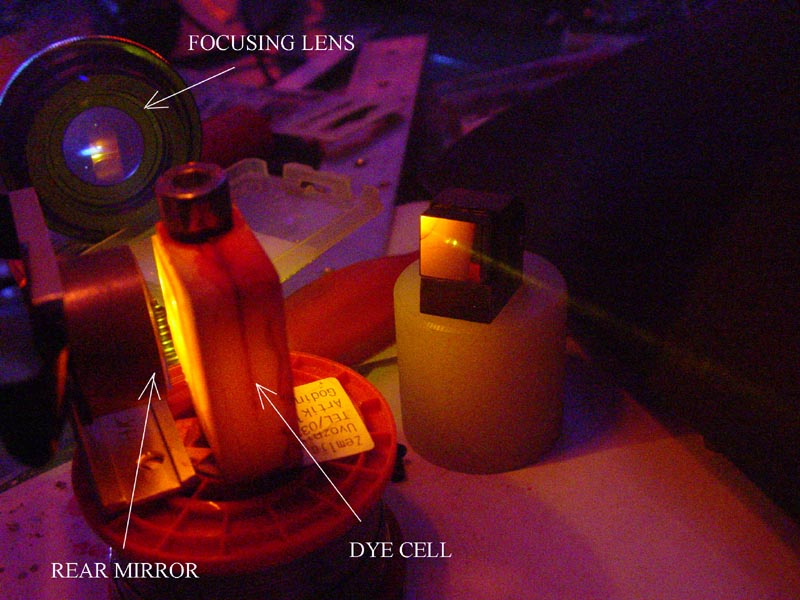
I was little play with DYE laser cell with Rhodamine 6 G. TEA laser with this setup have enough power
to make lasing DYE, but not yet as "superradiant" - there must be at least one rear mirror. (Better choice
will be make right resonator with HR and OC mirrors.) It was not easy make it lasing - aside cylindrical lens
I was must use one more focusing lens to make more power per square mm. Also, I was expect orange
lasing of R6G because of "self filtering" effect of orange liquid, but I was got yellow-green laser beam.
(at next two pictures I was make more smoke, because of low power of DYE laser output)
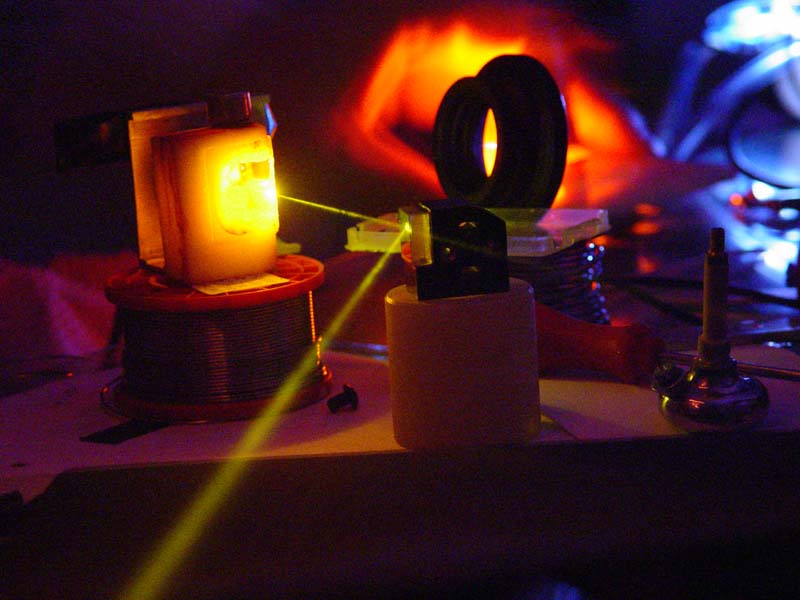
It was not always easy make visible laser beam, especially if it is very weak. I was make long exposure
with tens of pulses and a lot of cigarette smokes. There actually are two output beams, because one was
reflected of inner wall of DYE cell. So, I was use another mirror to separate only one of two beam.
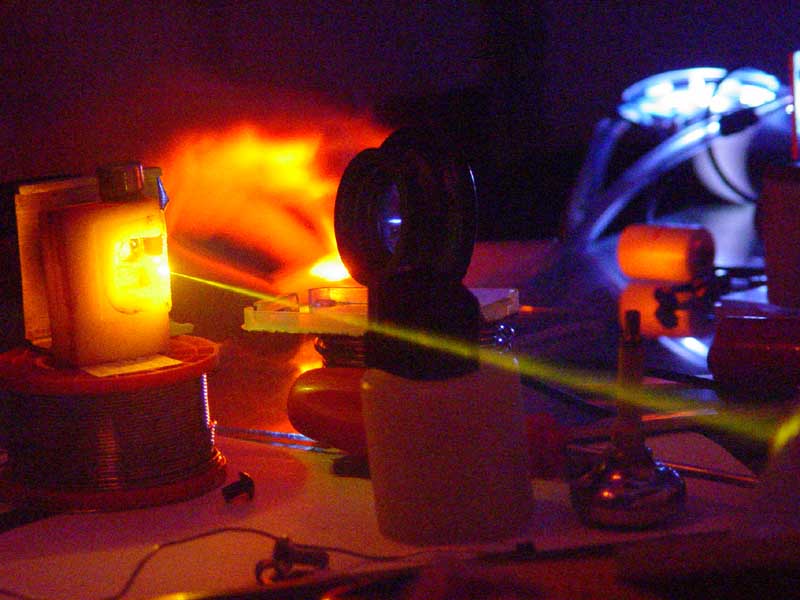
Though laser beam looks powerful, it was very weak. Behind cell and focusing lens is my hand
which quickly push triggering button to make more output laser light (hand looks orange-red
because of orange-red "ready" lamp which is inside button.
I need to make more experiments with peaking capacitors, because I was observe strange connections
between capacitance and distance between electrodes. For example, if distance between electrodes is small,
then there must be more capacitance. If distance is bigger, then must remove few capacitors to achieve more
power. I haven't right instrument for measuring output power, which make more difficult making some "right"
conclusions, but sometimes is obviously only by looking fluorescence on paper how power change by changing
capacitors or something else.